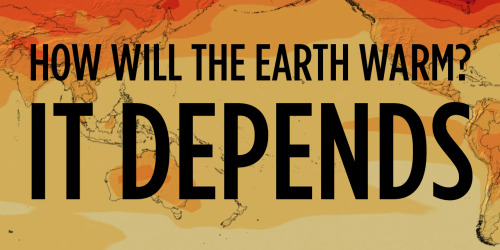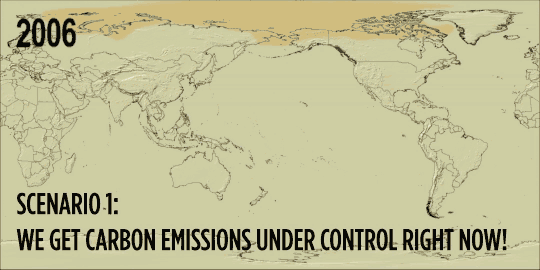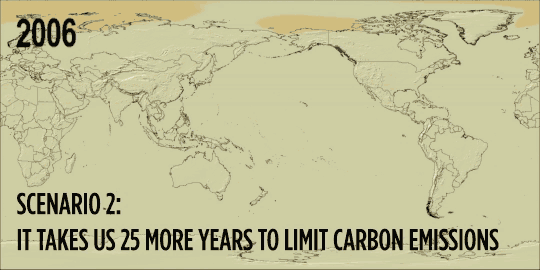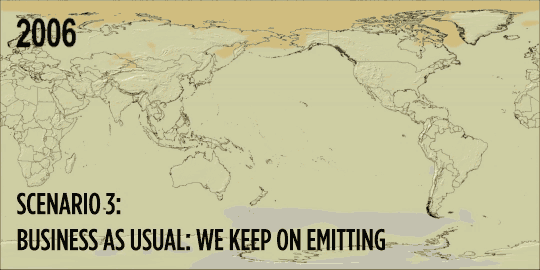A visual exploration of environmental problems, movements and solutions.
151 posts
Latest Posts by envirographs - Page 3


CO2 emissions from coal, oil, and gas worldwide - the Washington Post

The government owns a whole lot of land in the western United States. The resulting conflict between the government and environmentalists seeking to conserve this land for multiple use (parks, ranching, logging, mining, forestry, wildlife preservation, recreation etc.), and the Wise Use movement seeking to transfer the land from the government to the states or to private ownership, is a hallmark environmental fight in the west that many in the eastern United States are unaware. And it drives these standoffs that we saw in Nevada (Cliven Bundy) and now Oregon.

Accessibility remoteness index of Australia





As governments discuss climate change in Paris, they’ll be referring to the dire predictions of climate scientists. Here are three visualizations of possible futures based on detailed climate models and summed up by the United Nations’ Intergovernmental Panel on Climate Change (IPCC) in their 2013 report. The deeper the red - the hotter things are getting.
The message is clear: we better act fast.
How did they come up with these models? Read or listen to Nell Greenfieldboyce’s story.
Image Credit: NASA’s Scientific Visualization Studio and NASA Center for Climate Simulation




People of color support environmental protection at higher rates than whites. Yet, while people of color make up 36% of the US population, and 29% of the science and engineering workforce, they are substantially underrepresented on the staff of major environmental government agencies, NGOs, and the foundations that fund them. For the environmental movement to be effective in the future, it will need to become more diverse.


Direct and indirect employment, as of 2013-2014, in the global renewable energy industry.

Good read by Brad Plumer on the recent drop in China’s CO2 emissions.

This is cool.

Look at that wind and solar growth



The annual energy potential of renewable versus nonrenewable energy sources

From mic.com:
This map traces the ideal deployment of solar energy plants in the Sahara Desert to generate electrical power for the world's population. It might not look like a lot, but there are some major caveats here. For one, this map seems to assume 100% efficiency. In reality, current solar panel technology is only able to capture around 20% of solar energy, even in the desert. So the 254-by-254 kilometer area in the Sahara Desert that could theoretically absorb enough rays to power the entire world would have to be five times larger. Second, large amounts of electric power are lost over large transmission distances, meaning that a single power plant could never really power the entire planet.
Still, this map is a good illustration of how little space would be needed to power the entire planet. According to May, some 3.49 million square kilometers are available for solar thermal power facilities in Morocco, Algeria, Tunisia, Libya and Egypt alone. Worldwide, the potential high-energy solar sites far outstrip any plausible need.


As wold population increase following grey wolf reintroduction to Montana, Wyoming, and Idaho, ranchers have become the wolves’ greatest antagonist, blaming them for killing their livestock. But coyotes are the primary source of livestock loss, and wolves can help drive coyotes out of areas.





Offshore wind energy in Europe: Lots
Offshore wind energy in the US: none


Forest cover on Borneo over time, projected to 2020. Deforestation, driven mostly by clearing land to produce palm oil plantations, means less habitat for species such as orangutans, and more carbon emissions from disturbed peat lands.


While the average household today consists of fewer people than 60 years ago (2.55 people vs. 3.37 people), the average house size has increased by over 150%. Bigger houses (despite smaller families) means more energy used to heat and cool, more land cleared to build, and more materials required for construction.


Domestic cats allowed to roam freely outdoors are not native to the ecosystem and can cause substantial damage. Cats hunt birds, rodents, reptiles, amphibians and insects that are important components of ecosystems. The first graph shows that birds and mammals are the primary prey targets of outdoor cats, while the second shows estimates for the numbers of birds and mammals killed annually by cats in the mainland United States.




Elephant populations are in decline throughout Africa largely due to poaching. Poaching is a problem in all regions of Africa, but especially severe in western and central Africa.









